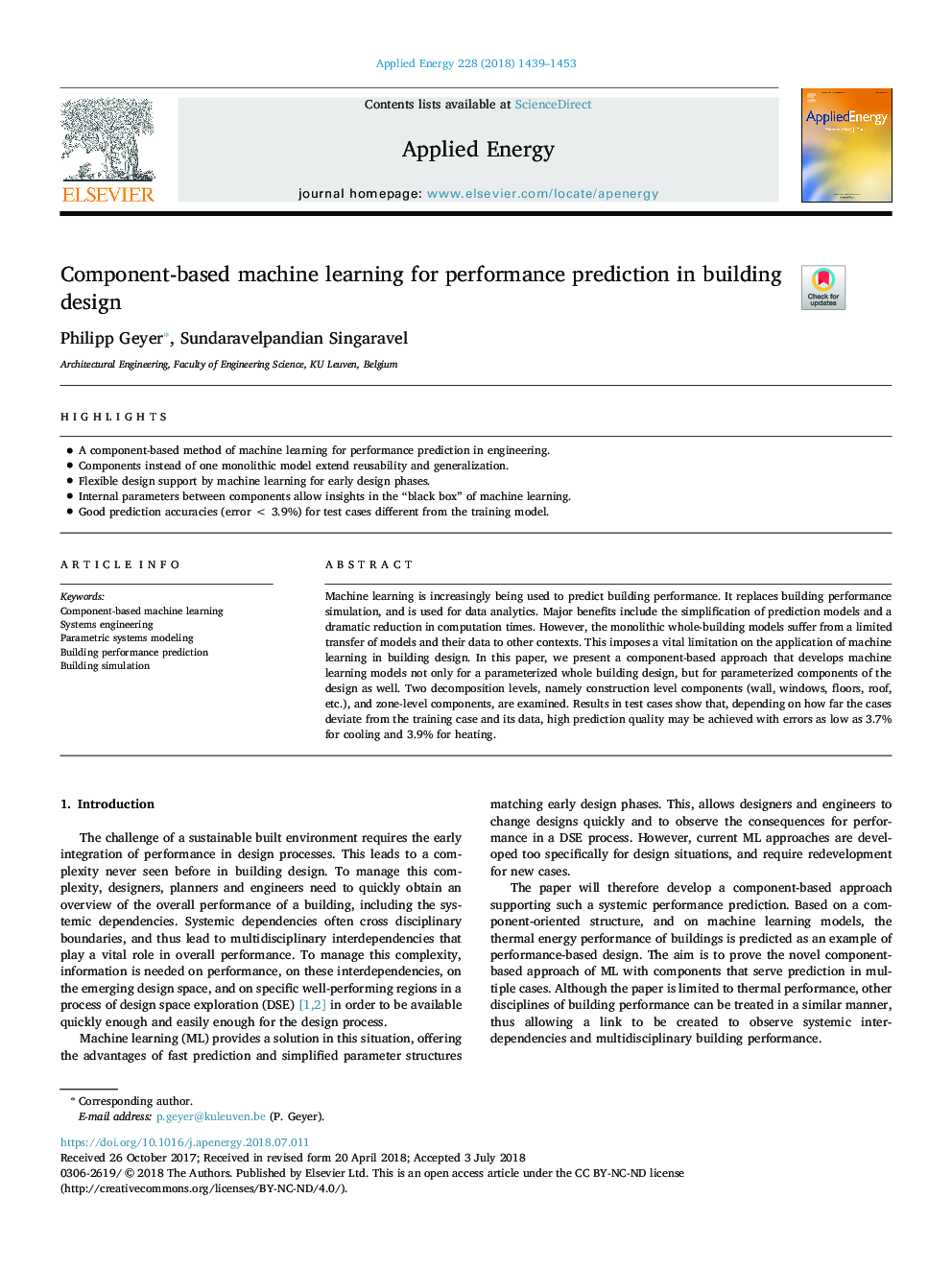| Article ID | Journal | Published Year | Pages | File Type |
|---|---|---|---|---|
| 6679842 | Applied Energy | 2018 | 15 Pages |
Abstract
Machine learning is increasingly being used to predict building performance. It replaces building performance simulation, and is used for data analytics. Major benefits include the simplification of prediction models and a dramatic reduction in computation times. However, the monolithic whole-building models suffer from a limited transfer of models and their data to other contexts. This imposes a vital limitation on the application of machine learning in building design. In this paper, we present a component-based approach that develops machine learning models not only for a parameterized whole building design, but for parameterized components of the design as well. Two decomposition levels, namely construction level components (wall, windows, floors, roof, etc.), and zone-level components, are examined. Results in test cases show that, depending on how far the cases deviate from the training case and its data, high prediction quality may be achieved with errors as low as 3.7% for cooling and 3.9% for heating.
Related Topics
Physical Sciences and Engineering
Energy
Energy Engineering and Power Technology
Authors
Philipp Geyer, Sundaravelpandian Singaravel,
